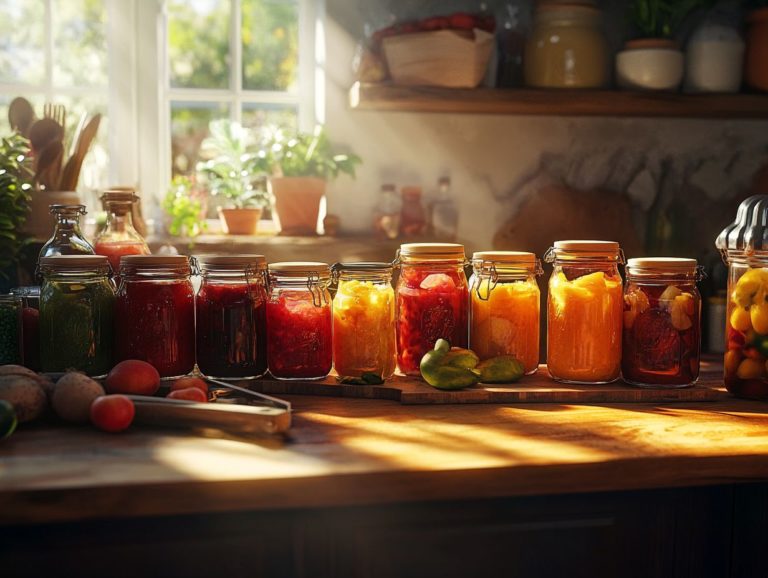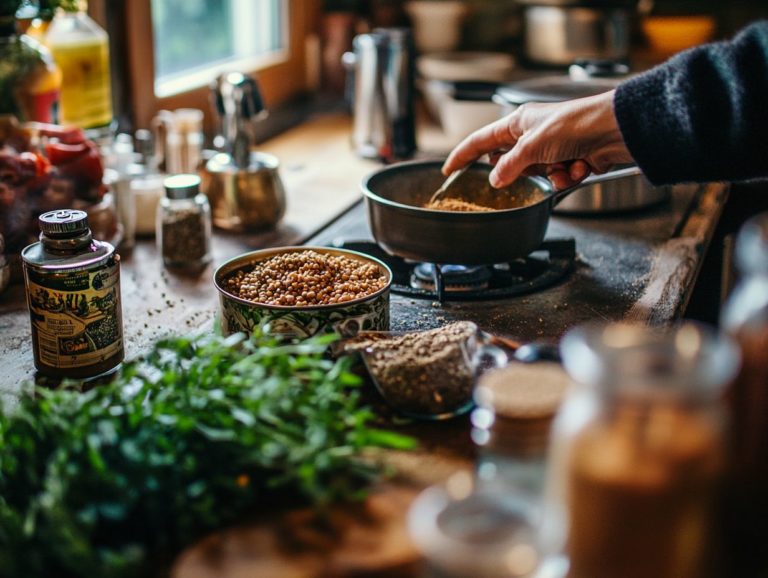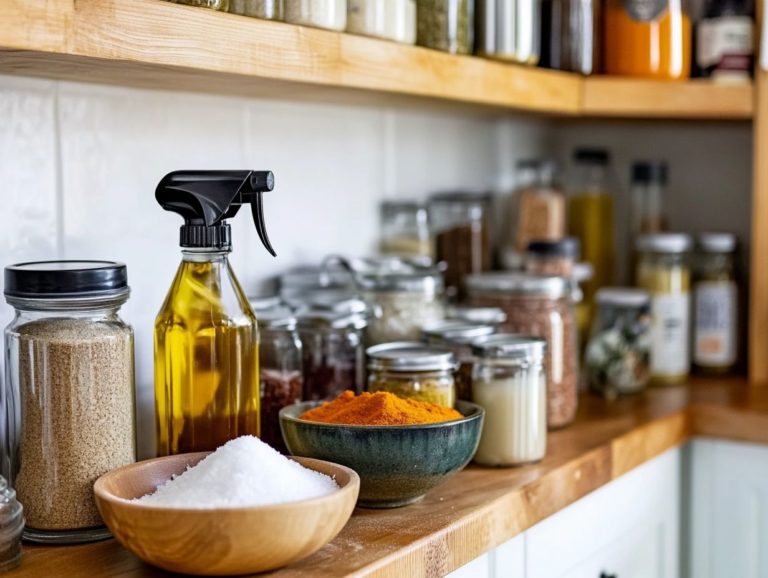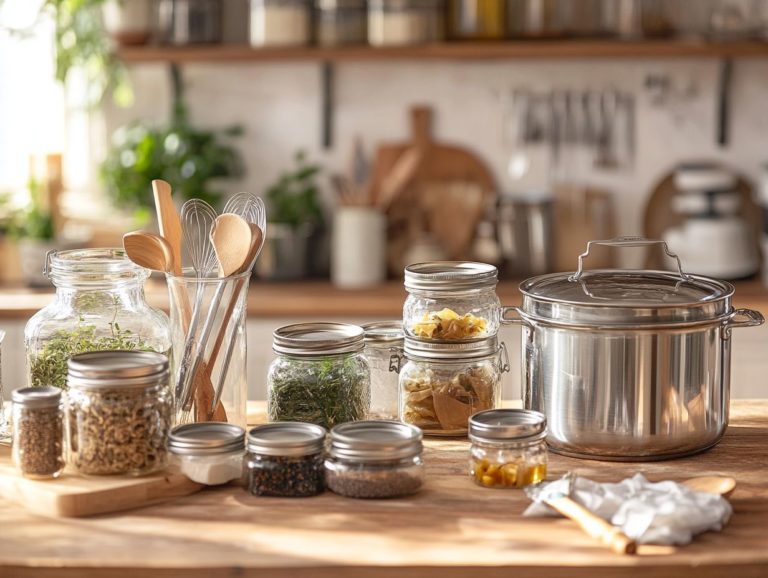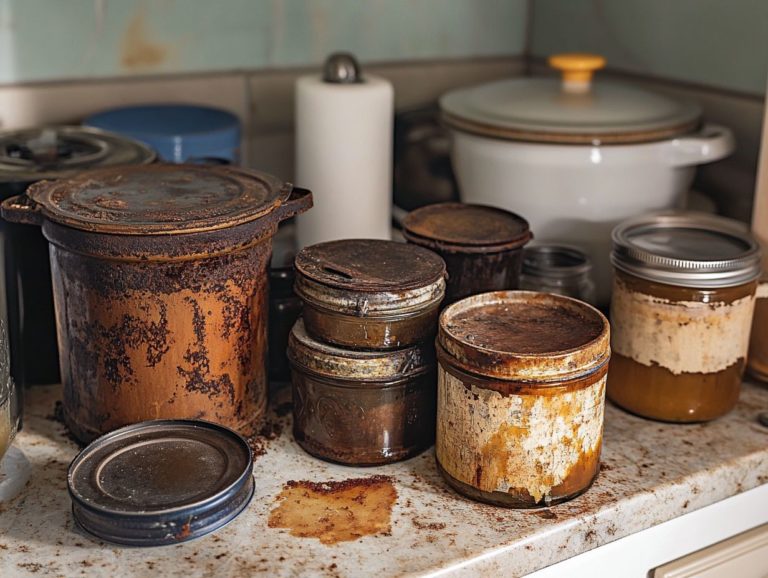Canning Safety: Common Mistakes to Avoid
Canning at home can be a truly rewarding way to preserve your favorite fruits and vegetables. It s essential to approach it carefully to keep your food safe and delicious!
This guide will walk you through common pitfalls and mistakes to avoid in the canning process. You’ll find essential food safety guidelines, proper handling and storage techniques, and a rundown of the equipment necessary for safe canning.
With these best practices and tips at your fingertips, you ll be well-equipped to master this timeless skill and enjoy your preserved delights with confidence.
Contents
- Key Takeaways:
- The Importance of Proper Canning Techniques
- Common Mistakes in Canning
- Food Safety Guidelines for Canning
- Equipment and Tools for Safe Canning
- Best Practices for Canning at Home
- Frequently Asked Questions
- What are the most common mistakes to avoid when canning food?
- Why is it important to follow proper canning procedures?
- What are some signs that canned food may be unsafe to eat?
- How can I ensure that my jars are properly sterilized?
- Can I reuse jars and lids for canning?
- What should I do if I suspect that my canned food is unsafe to eat?
Key Takeaways:

- Proper canning techniques are crucial for food safety. Avoid common mistakes like using damaged jars or not following proper processing times to ensure your canned food is safe to eat.
- Follow food safety guidelines when canning, such as using clean hands and equipment. These can help prevent foodborne illnesses and ensure your canned goods stay fresh.
- Having the right equipment and supplies, like a pressure canner and fresh ingredients, is key to safe canning. Be sure to properly use and maintain your equipment to avoid potential safety hazards.
The Importance of Proper Canning Techniques
Using proper canning techniques is crucial for ensuring food safety. For those looking to enhance their skills, following tips for safe canning practices also helps preserve the flavor and nutrients of your homemade creations, whether they’re fruits or vegetables.
By employing methods like pressure canning and boiling water baths, you can help protect against harmful bacteria, such as botulism, a serious illness caused by a toxin produced by bacteria. Mastering the art of canning allows you to enjoy your favorite seasonal produce all year round while reducing waste and ensuring you re consuming food that is both safe and nutritious.
Common Mistakes in Canning
Understanding the common canning mistakes is essential for ensuring food safety and achieving successful preservation outcomes. Improper techniques can lead to spoilage and potential health risks.
For instance, failing to use the correct pressure canner for specific ingredients, neglecting to check the seals on jars, or using the wrong lids can compromise the entire canning process. To avoid these issues, it’s important to learn about common canning mistakes. By recognizing these pitfalls, you can refine your skills and ensure that your results are not only delicious but also safe every single time.
Identifying and Avoiding Mistakes
Identifying and avoiding mistakes in the canning process is essential for both food safety and preserving the quality of your canned goods. To help you navigate this, it’s important to understand how to avoid common canning errors. Key pitfalls include not using the recommended jars and lids, failing to sterilize equipment, and overlooking specific ingredient guidelines that are crucial for safe canning.
By educating yourself about tested recipes and grasping the nuances of canning, you can significantly reduce the chances of making these errors. Familiarizing yourself with common canning mistakes and their solutions, such as handling jars improperly like using cracked or damaged vessels, can lead to contamination or spoilage.
Incorrect ingredient ratios can compromise the acidity level, rendering your canned food unsafe to consume. Always ensure that fruits or vegetables are processed with the correct balance of sugar, salt, or vinegar, adhering strictly to validated guidelines. For further guidance, refer to canning techniques: troubleshooting tips. Using untested or outdated recipes, especially for high-risk foods like tomatoes or green beans, can greatly increase the risk of botulism.
Therefore, it is crucial for you as a home canner to rely on trustworthy sources and stay informed about food safety standards to ensure the best possible outcomes.
Food Safety Guidelines for Canning
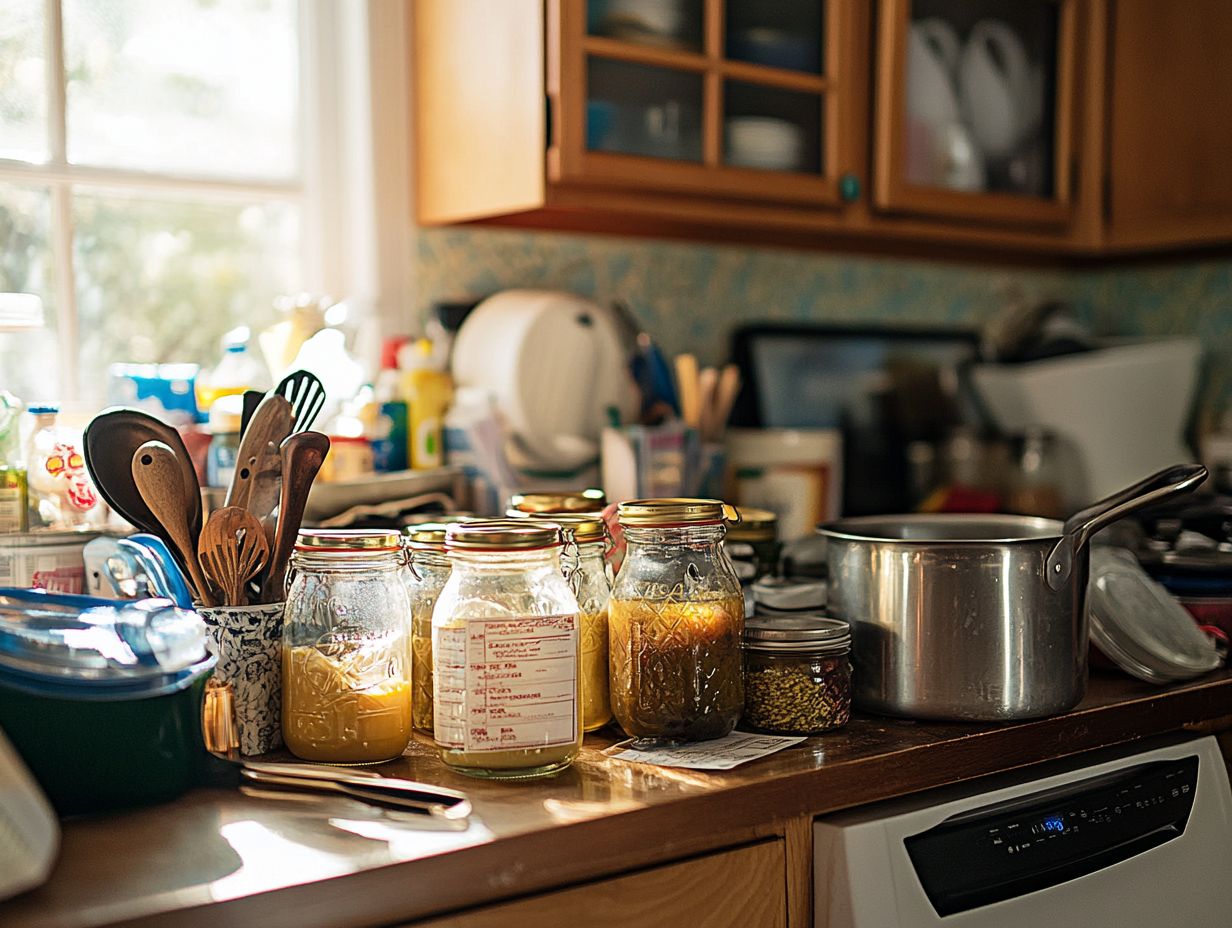
Food safety guidelines for canning are essential to ensure that your preservation efforts maintain the delightful flavors and nutritional value of your homemade goods, all while safeguarding against contamination and spoilage.
By adhering to established protocols such as properly sterilizing your equipment, following the correct processing times, and using suitable jars and lids you effectively protect yourself from potential hazards like botulism.
These safety measures are crucial for successful and confident home food preservation. Start canning today and savor your delicious creations all year!
Proper Handling and Storage Techniques
Proper handling and storage techniques are essential for successful canning. These practices ensure your jars of food remain safe and flavorful long after the canning process is complete.
Once the cooling period has wrapped up, check each jar for a proper seal. Simply press down on the center of the lid; if it pops back, that jar hasn t sealed correctly. Refrigerate it or reprocess it.
Store your canned goods in optimal conditions ideally below 70 F and away from direct sunlight. This will significantly extend their shelf life.
Maintaining a dry and organized storage area not only enhances food safety but also simplifies tracking expiration dates. Rotate older jars to the front for consumption. By following these best practices, you greatly increase the reliability of your home-preserved foods.
Equipment and Tools for Safe Canning
The right equipment and tools are essential for safe canning and ensuring food safety. Essential items include pressure canners, boiling water bath setups, and high-quality jars and lids. These serve as the foundation for effective canning.
Mastering the proper use of this equipment dramatically enhances your canning experience. Using the correct tools minimizes the risk of spoilage and contamination.
Essential Supplies and How to Use Them
Essential supplies for canning include a range of tools and ingredients vital for a successful and safe canning experience. You ll need items like pressure canners for low-acid foods, specially designed jars, and high-quality lids to create a proper seal and ward off spoilage.
Mastering each tool’s use, along with selecting the right ingredients, guarantees a safe and enjoyable home preservation process.
Also, consider investing in additional must-have items, such as:
- A jar lifter for safely handling hot jars.
- A funnel to minimize spills during filling.
- A magnetic lid lifter for effortless lid placement.
Fresh, high-quality ingredients are equally crucial. Choosing seasonal produce boosts flavor and enhances preservation results. Having a reliable recipe guide will help you navigate the intricacies of canning times and methods, which can vary between fruits, vegetables, and pickled items.
With the right knowledge and equipment, canning transforms into a rewarding and efficient means of storing food.
Best Practices for Canning at Home
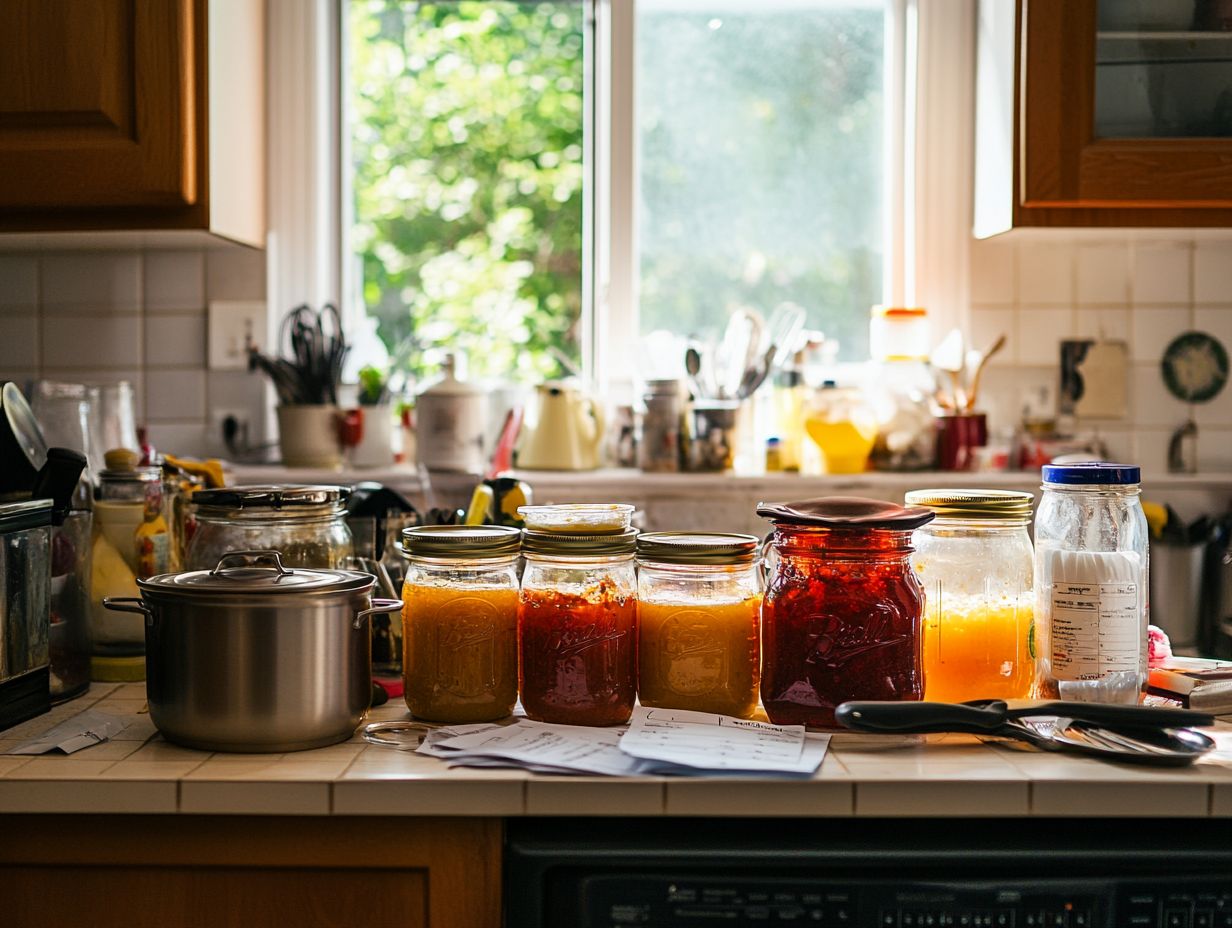
Using best practices for home canning ensures your delicious creations are safe and bursting with flavor while retaining their nutritional value. From choosing the right recipes to understanding ingredient ratios and how long to cook the food in jars, following these guidelines minimizes the risk of spoilage and elevates the quality of your canned foods.
Adjusting for altitude can significantly enhance your canning success. This knowledge allows you to savor the fruits of your labor with confidence.
Tips for Successful and Safe Canning
To achieve successful and safe canning, follow specific tips that address the process and avoid common pitfalls. Key recommendations include using tested recipes, ensuring your equipment is properly sterilized, and paying close attention to cooking times for different foods. For help with specific issues, refer to common canning errors and how to fix them.
By following these guidelines, you can optimize your results and truly savor the fruits of your labor with confidence.
Select recipes that feature the correct acidity levels, as this plays a significant role in food preservation. Always turn to reliable sources like the USDA or trusted canning guides for instructions you can count on. Investing in quality equipment such as a pressure canner for low-acid foods can significantly enhance both safety and efficacy.
It s equally important to monitor for signs of spoilage after sealing your jars. This can help identify any issues before they escalate. Ultimately, successful canning hinges on your attention to detail and commitment to scientifically-backed methods.
Frequently Asked Questions
Grab your jars and begin your canning adventure today!
What are the most common mistakes to avoid when canning food?
Avoid these common mistakes when canning food: not following proper canning methods, using defective or old canning equipment, not properly sterilizing jars, and not accurately measuring ingredients. To learn more about this, check out how to avoid common canning mistakes.
Why is it important to follow proper canning procedures?
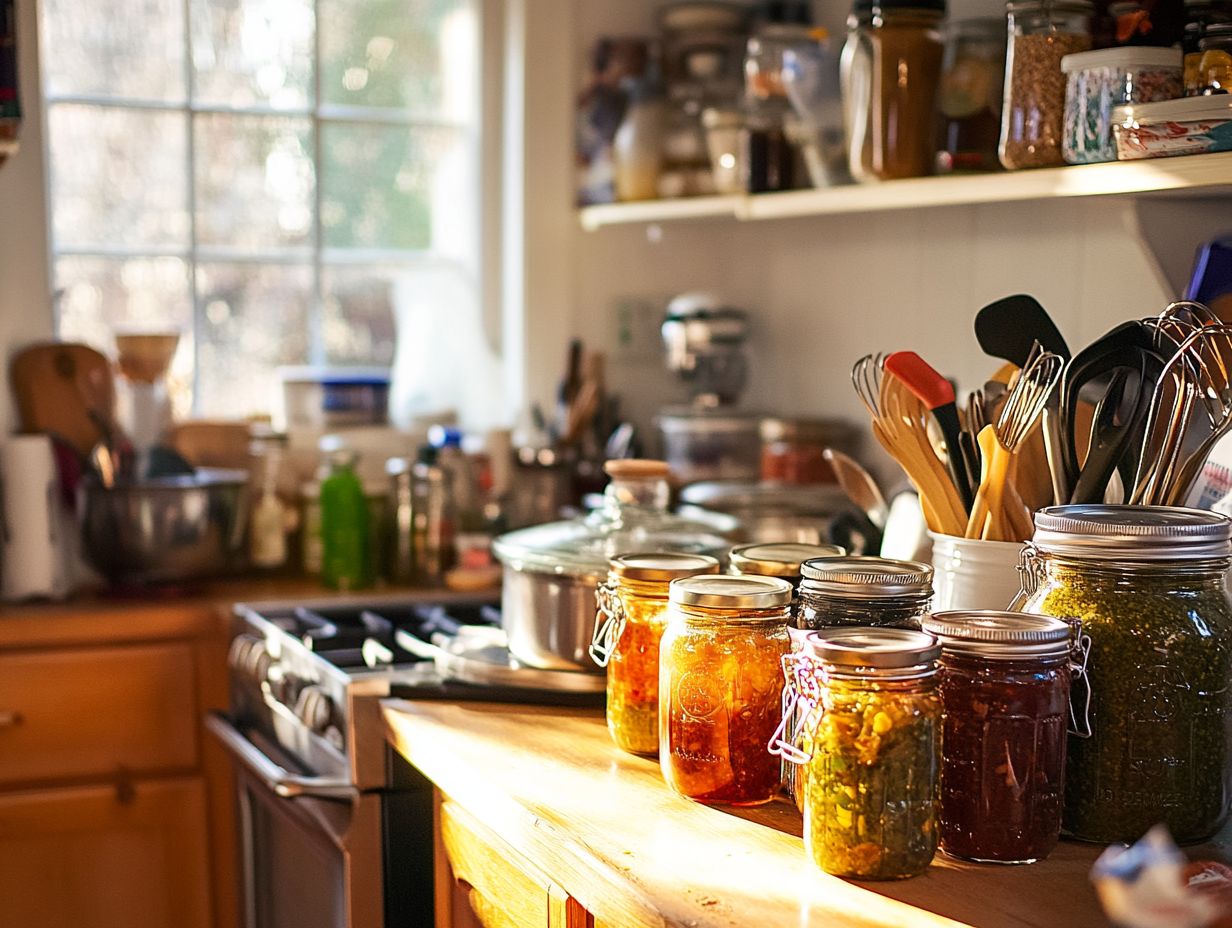
Following proper canning methods is crucial for ensuring the safety of your canned food. For those interested in preserving their harvest, understanding canning safety techniques is essential, as not doing so may spoil the food and cause illness.
What are some signs that canned food may be unsafe to eat?
Signs that canned food may be unsafe to eat include bulging or leaking lids, visible mold, strange smells, or if the food appears cloudy or discolored. Always check for signs of botulism. This bacteria can be dangerous if canned goods are not processed correctly.
How can I ensure that my jars are properly sterilized?
Jars can be properly sterilized by boiling them in water for 10 minutes, using a dishwasher with a sanitize setting, or baking them in the oven at 225 F for 10 minutes. Proper sterilization is crucial for home preservation, especially when canning acidic foods like tomatoes and pickles.
Can I reuse jars and lids for canning?
No, it is not safe to reuse jars and lids for canning. They can become warped or damaged, compromising the seal and safety of the food. Always use new jars and lids for each batch of canned food.
What should I do if I suspect that my canned food is unsafe to eat?
If you suspect that your canned food is unsafe to eat, do not consume it. Discard the food and the jar it was in immediately. It is better to be safe than sorry when it comes to food safety. Stay alert and prioritize safety while canning!

